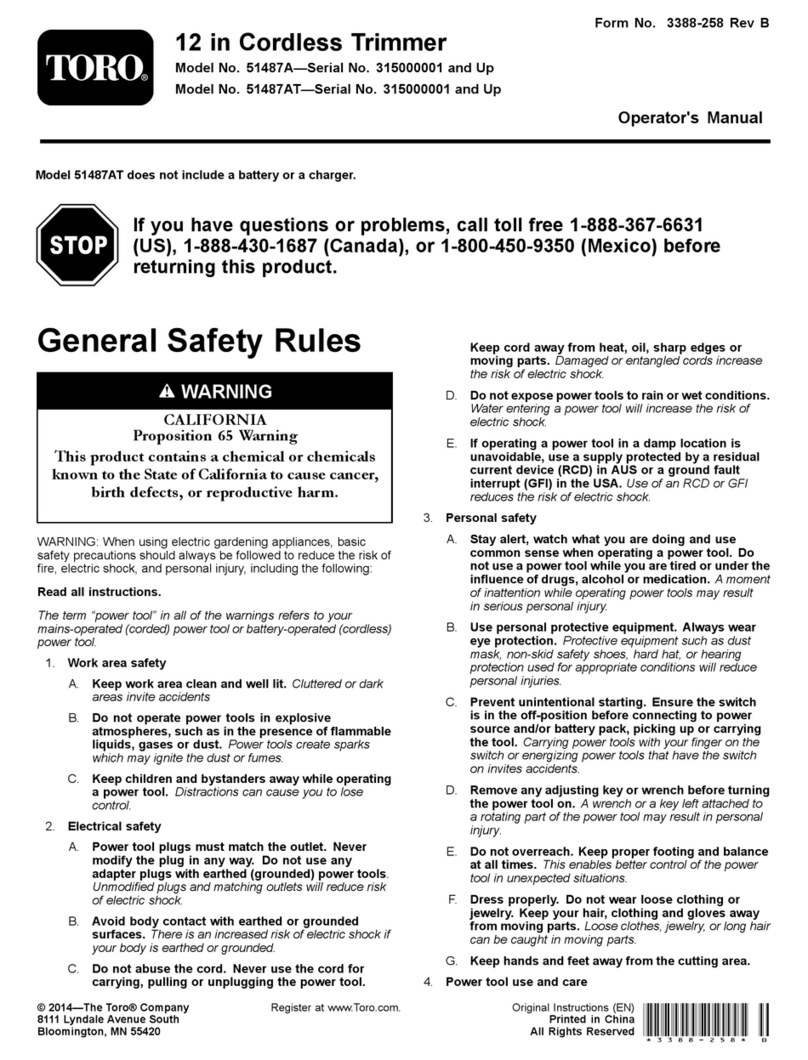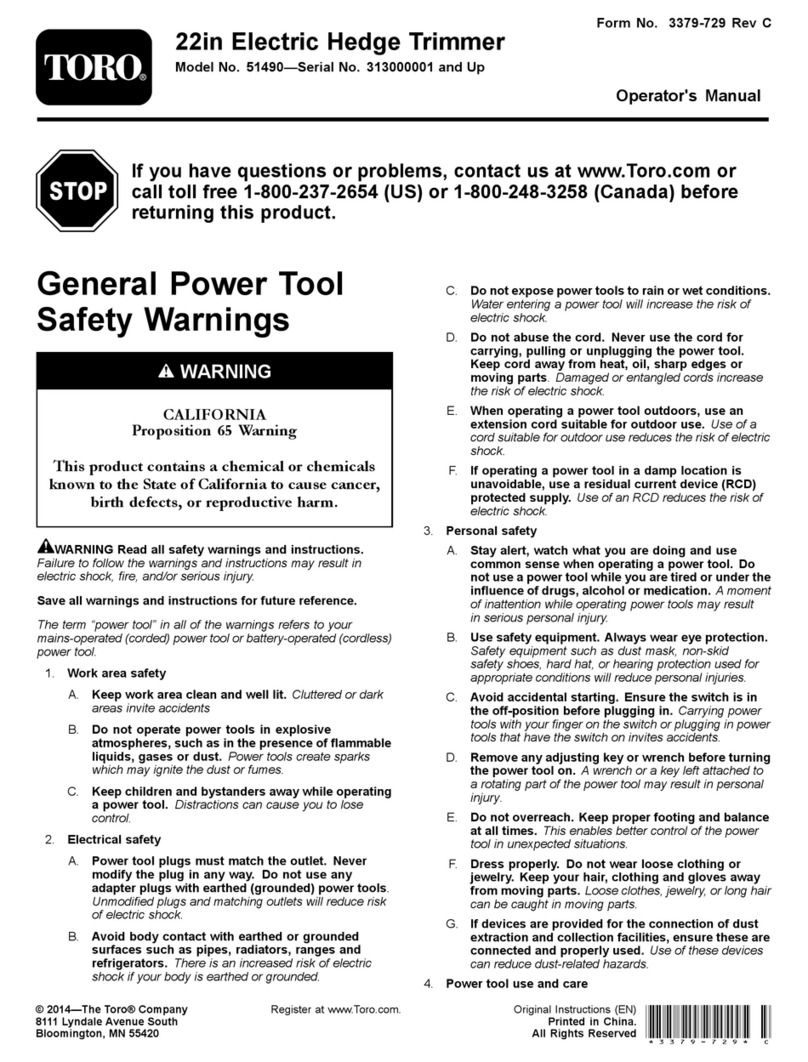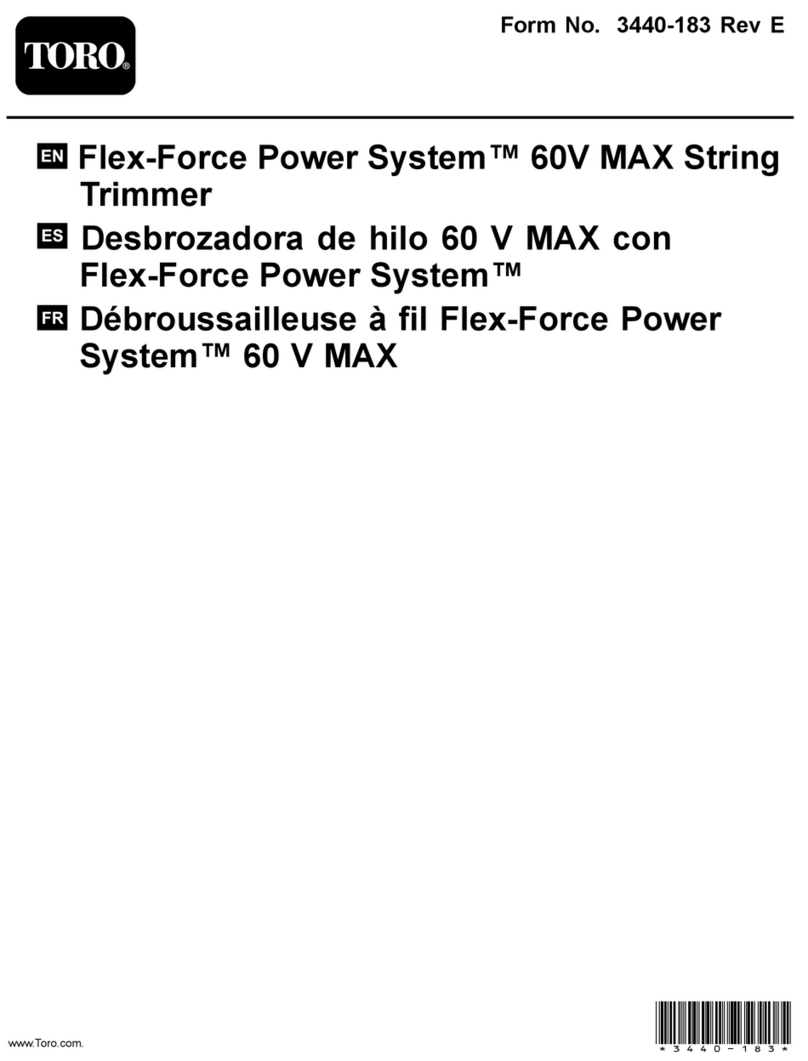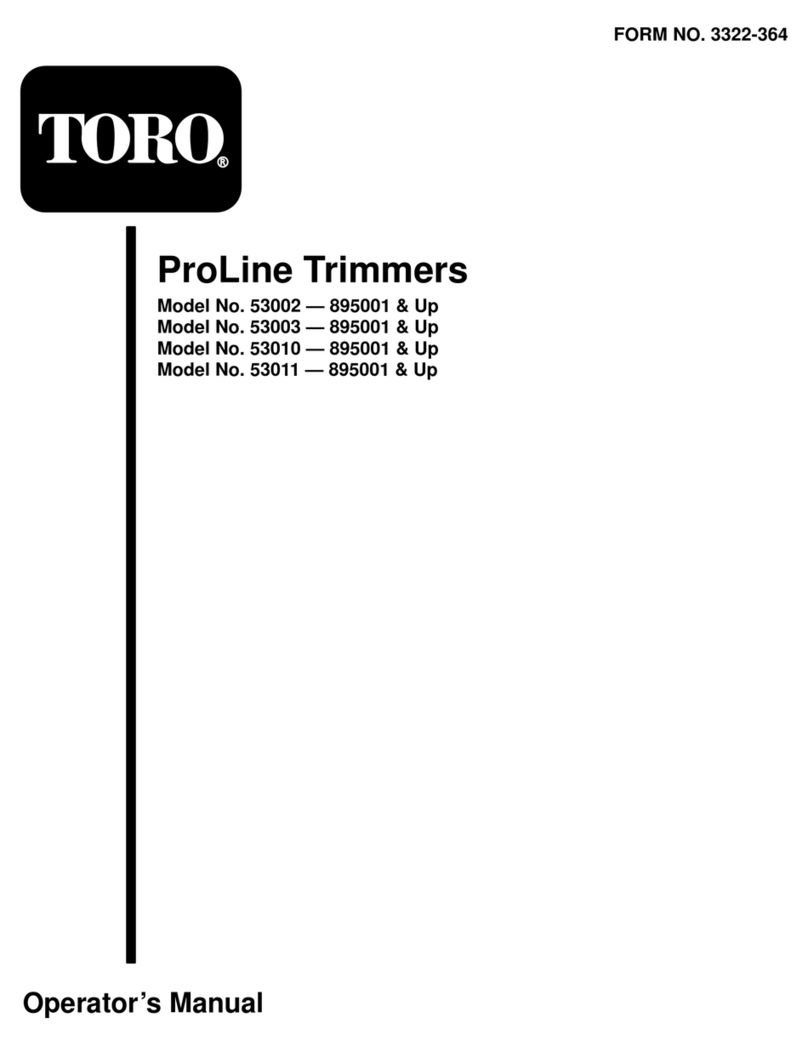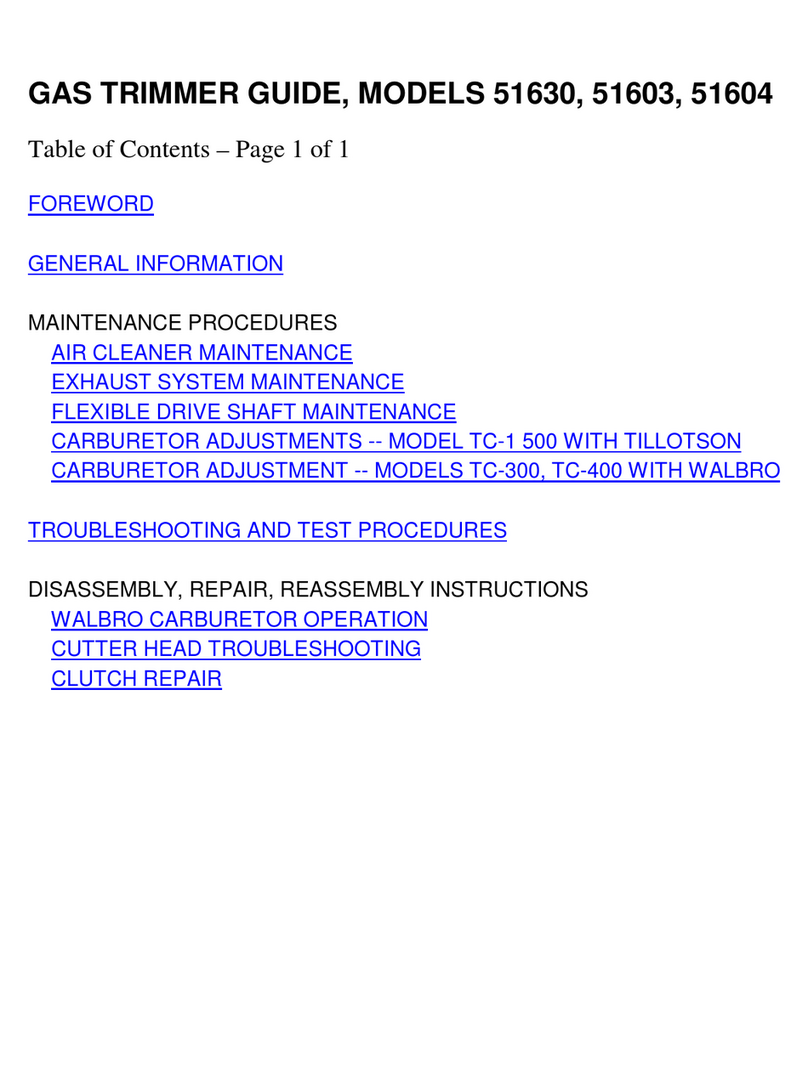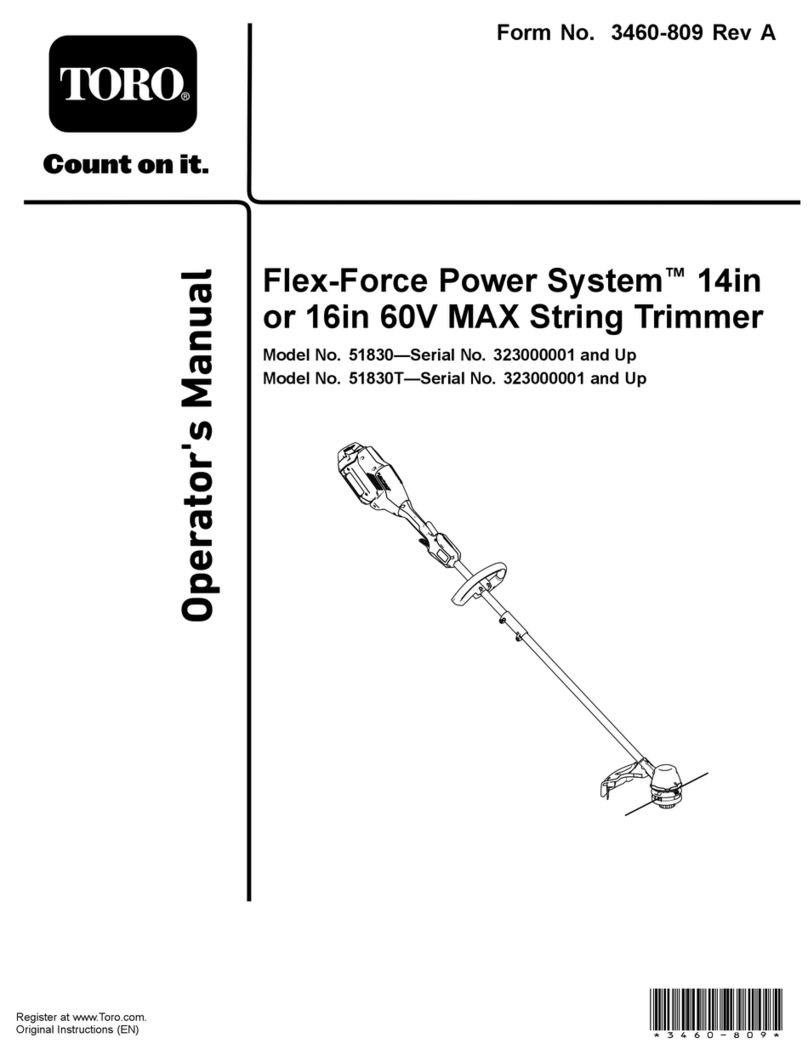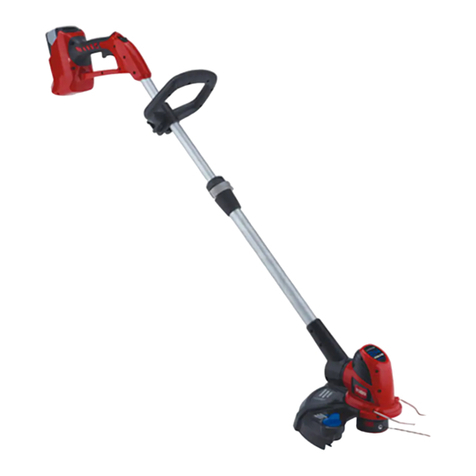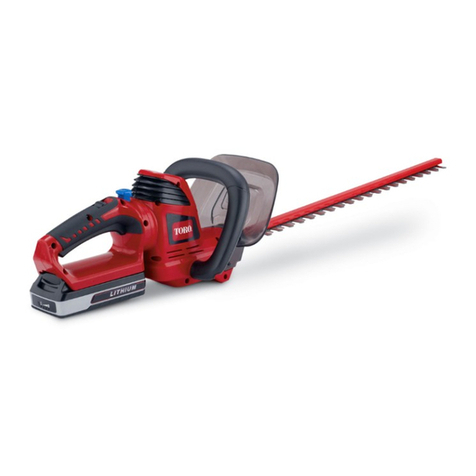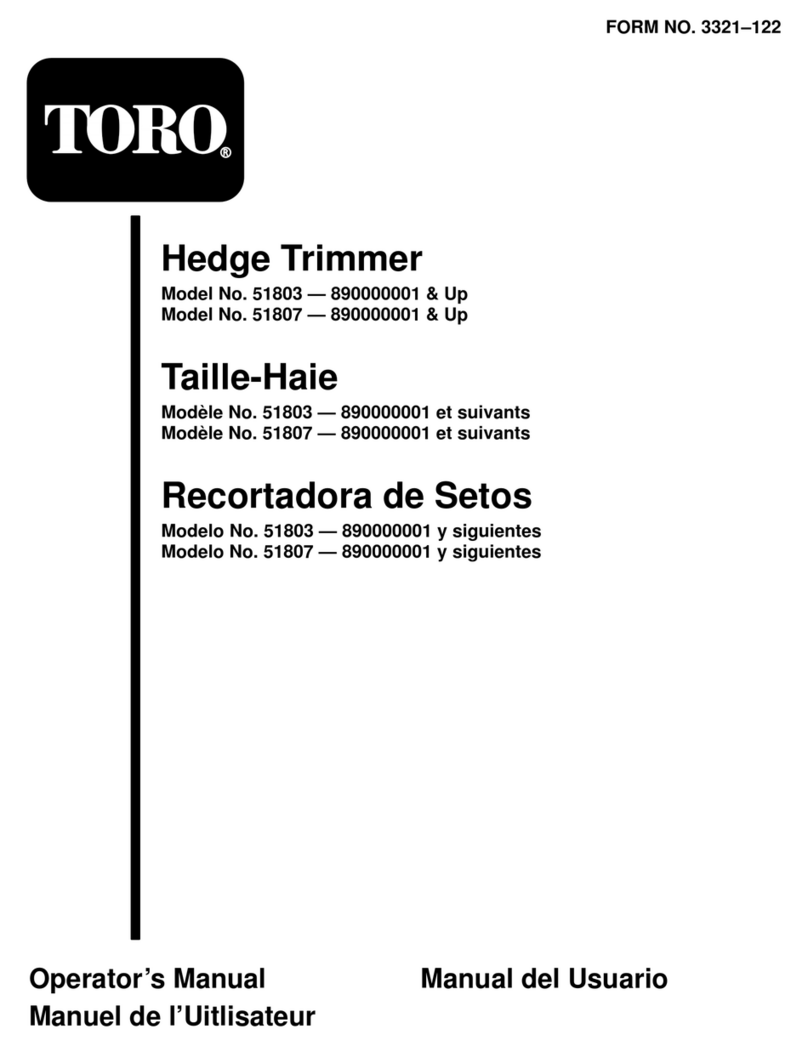
TC1000 GAS TRIMMER, MODEL 51641
Table of Contents – Page 3 of 3
SECTION 6 ENGINE - Continued
ENGINE - INSPECTION
ENGINE - REASSEMBLY
ENGINE - INSTALLATION ON DRIVE TUBE
SECTION 7 CONTROLS
CONTROL AND GRIP - REMOVAL FROM DRIVE TUBE
CONTROL AND GRIP - INSTALLATION ON DRIVE TUBE
SECTION 8 HANDLE
HANDLE - REMOVAL FROM DRIVE TUBE
HANDLE - INSTALLATION ON DRIVE TUBE
HANDLE - ADJUSTMENT
SECTION 9 SHIELD
SHIELD - KNIFE REPLACEMENT
SHIELD - REMOVAL FROM DRIVE TUBE
SHIELD - INSTALLATION ON DRIVE TUBE
SECTION 10 CUTTER HEAD BEARINGS
CUTTER HEAD BEARINGS - REMOVAL
CUTTER HEAD BEARINGS - INSTALLATION
SECTION 11 FLEXIBLE DRIVE SHAFT
FLEXIBLE DRIVE SHAFT - REMOVAL
FLEXIBLE DRIVE SHAFT - SERVICE
FLEXIBLE DRIFT SHAFT - INSTALLATION
SECTION 12 DRIVE TUBE
DRIVE TUBE - REMOVAL
DRIVE TUBE - SERVICE
DRIVE TUBE - INSTALLATION
SECTION 13 TAP AND TRIM HEAD
TAP AND TRIM SPOOL - TAP AND TRIM SPOOL - REMOVAL
TAP AND TRIM SPOOL - LINE REPLACEMENT
TAP AND TRIM SPOOL - REMOVAL
TAP AND TRIM HEAD - TAP AND TRIM HEAD - DISASSEMBLY
TAP AND TRIM HEAD - INSPECTION
TAP AND TRIM HEAD - REASSEMBLY
SECTION 14 FLEX BLADE
FLEX BLADE - REMOVAL FROM DRIVE SHAFT
FLEX BLADE - INSTALLATION ON DRIVE TUBE
SECTION 15 ACCESSORIES
STANDARD AND DELUXE HARNESS - ASSEMBLY

